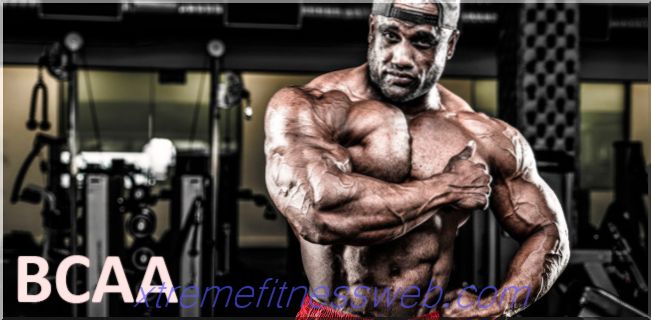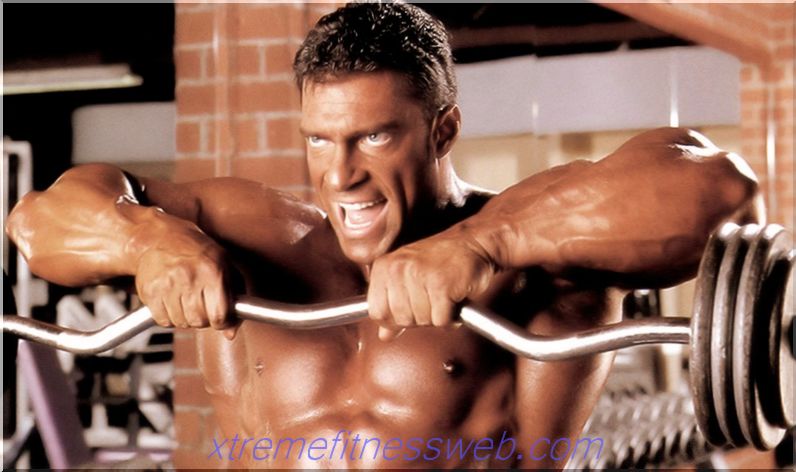
Powerful quadriceps is not only beautiful, but also correct in terms of anatomy and biomechanics. People who shake their legs normally, paying attention not only to the back of the thighs, but also to the front, have fewer problems with lower back pain. They are not tormented by pain in the piriformis muscle due to spasms and impaired posture due to tense lower back. Quadriceps should be, even if some people are there and deny them aesthetically. In addition, the presence of a well-developed front surface of the thighs is healthy knees. Nevertheless, we must not only bend our legs, but also unbend them, so anatomically conceived.
Content
- 1 working muscles
- 2 Extension of the lower leg and knees
- 3 Technique
- 4 Tips
- 5 Application
Working muscles

The simulator is designed so that the quadriceps femoris takes over the main load. She's a quadriceps. The muscle extends the tibia, brings the thigh forward, and flexes the hip joint.
Specifically, the version with the simulator does not need stabilization of the case, and other additional points. If we are talking about turning on the hands and the press, this is superfluous.
In the exercise, all 4 quadriceps heads work:
- Direct - extension begins, this is the muscle that covers the thigh in front;
- Intermediate - stabilizes the leg, and brings the hip joint, it is located under the straight line;
- Lateral - in order to use it, the socks are bred apart, the muscle itself surrounds the thigh from the side;
- Medial - to activate it to a greater extent, the socks are directed inside
Extension of the lower leg is not a strength exercise. If they work in the simulator, their goal is to strengthen the front surface of the thigh and "pumping" the lagging muscles. This movement helps to improve the result in the classic deadlift, as well as in squats, front squats, jerks, jerks and leg presses.
Extension of the lower leg and knees

In the bar, another extension option is used - the athlete puts a pancake on his lower legs, and performs movement with him. It is believed that this is less traumatic than the "classic" in the simulator. Extension in the simulator is associated with injuries of the PCS (anterior cruciate ligament). However, the risk is higher if a person mindlessly increases weight and “pushes” it up, and then drops it jerkily.
Indeed, extension of the lower leg is anatomically true only in the plane of the flexion of the hip joint, which for most people - with the socks out. And the movement is not intended for heavy weights. It is good that the relief of the quadriceps can be done with repetitive work.
Those who are afraid of being injured with PKS can exercise with light rubber, or perform extensions on one leg, directing the toe in an anatomically natural plane.
Execution technique

Usually, beginners are advised to straighten their legs in the simulator only because it is impossible to make a mistake in this exercise. Here, Internet experts are mistaken. A beginner can make mistakes everywhere. For example, individuals do not know that the back of the simulator is adjustable, and the pillow-retainer can also be adjusted. They sit on the edge of the seat and push the ankles under the car seat. From this position, the PKS is overstretched at the start. Therefore, such "techniques" are not recommended for fitness.
In order to make the exercise true, you must:
- Adjust the back so that it is a support. Most simulators are adjustable backrest and there is the ability to move and push it;
- The correct starting position is that the back rests on the back, the thigh lies on the seat, the shin is fixed by the simulator cushion, and the angle between the shin and the thigh is no more than 90 degrees;
- In rehabilitation, an incomplete amplitude is allowed when the roller is attached higher than 90 degrees;
- Socks should be directed a little towards themselves, it is better to start the exercise with a reduction in quadriceps
The movement is as follows:
- The downward movement should not be forced, it is better to smoothly lower and smoothly extend the lower leg;
- The back should be pressed to the back completely, the lumbar too;
- Extension should be done on exhalation, flexion - on inhalation.
Variations are, in fact, very diverse. The simplest is one leg extension. The version for those who have imbalances in the development of the legs, and "starts" always with one hip, only bringing the second. This version of the exercise is better suited if the athlete is afraid for PCD, or already has injuries.
The second variation is extension with rubber. Sitting on a chair, the athlete extends the lower leg with the fixation of a rubber shock absorber on the foot. This option is suitable for those who need to strengthen their ligaments and protect themselves from injuries.
The third variation is for those who do not have an extension trainer. A pancake is placed on the lower leg, the athlete is sitting on a chair. The option strengthens the ankle and soleus, too, since weight will need to be kept at the expense of the ankles.
The fourth variation is extension with the socks turned outward and the heels inward. It is believed that such a technique builds more rounded hips in girls, whom nature has endowed with an I-shaped figure.
Fifth - socks inside the heel out. This is a rather controversial position of the feet in terms of anatomy, but some athletes believe that this is how they better work out the medial head of the quadriceps.
Be that as it may, the success of this exercise is in controlled technology, the absence of jerks and jerks, and the slow lifting and lowering of weight. Control the movement of the roller, and the exercise will not be traumatic for you.
The movement is usually performed for 12-15 or more repetitions, in 3-4 working approaches, do not work in power mode
Tips

- The presentation of various sports doctors insists that leg extensions overload the knee joints. To minimize this stress, do not allow the lower legs to move under the hips - from the bottom of the exercise, the angle at the knees should vary from 90 to 100 degrees.
- From the top of the exercise, always straighten your legs as much as possible - the only way is it possible to achieve a better contraction of the external lateral and internal medial muscles, which are responsible for the fixation of the patella.
- Do not take too much weight - it can clog the knee joints and in addition will not allow you to fully stretch your legs. The load on the muscles of the quadriceps in the extension of the legs is better to achieve an additional number of repetitions, rather than heavy weights.
- If the taut muscles of the back of the thigh prevent you from straightening your legs as much as possible, in the initial position slightly tilt the body, while the back of the simulator should be taken back a little to an angle of 45 degrees, then fix the seat parallel to the floor. This will not only soften the tension of the muscles of the back of the thigh, but also give you excellent stretch the main muscles of the legs - quadriceps. Do not lean your torso forward - this will reduce the effectiveness of the exercise.
- To concentrate the load on the middle of the quadriceps, spread the toes apart. If you want to hard-clog the outer lateral bundles of the quadriceps, slide the socks a little inward.
- If you feel that this exercise is very stressful on the knee joints, change it to leg extension in the block simulator. Lock the cable strap that runs through the lower block to the right ankle. Focus on the left leg while you are standing with your back to the block, and the right one bend a little at the knee and slightly lift. Keeping the body and hips stationary, do all the repetitions - extension of the left leg. After that, fix the strap to the right leg and do all the repetitions for the second leg.
Application

Intended: Both novice athletes and professional athletes.
When: At the end of the leg workout, in order to finish them off. Before leg extensions work out leg presses, squats with a barbell and lunges with a barbell. After leg extensions, you can still perform leg flexion, or a super set of leg extension / leg curl.
How much: 4 sets of 10 to 16 repetitions.
Sport briefing: Leg extensions draw the relief of the rectus anterior thigh muscle, give it a relief, volumetric shape throughout its entire length, which is especially noticeable when viewed from the side of the thigh. Among other things, leg extensions allow you to achieve a clear separation between the lateral and rectus femoris muscles.
The power of the rectus femoris muscle greatly enhances your achievements in all sports in which there are running and jumping. Leg extensions with a low weight are a great way to repair a knee joint after a serious injury.







